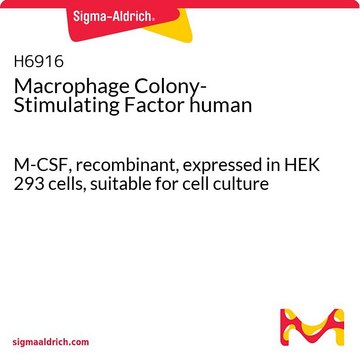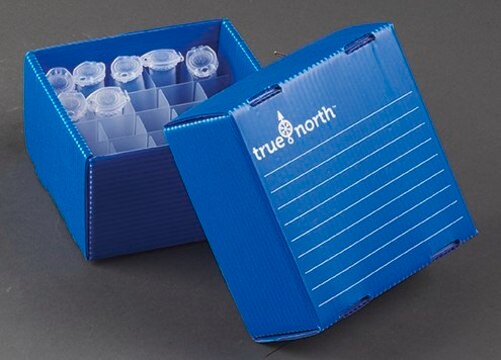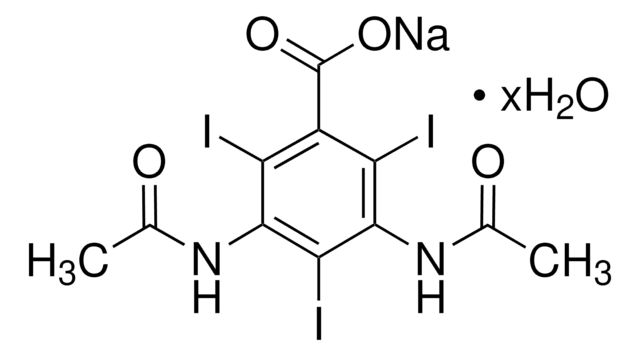GE17-5446-52
Ficoll®-Paque PREMIUM 1.073
Cytiva 17-5446-52, pack of 6 × 100 mL
About This Item
Recommended Products
form
liquid
packaging
pack of 6 × 100 mL
manufacturer/tradename
Cytiva 17-5446-52
color
Colorless to slightly yellow
pH range
5.5-7.5
General description
Application
Features and Benefits
- Sterile, ready to use reagents used to prepare mononuclear cell preparations from peripheral blood, bone marrow, and umbilical cord blood by density gradient centrifugation.
- Manufactured under a Quality Management System certified to ISO 13485:2003.
- Low levels of endotoxin (< 0.12 EU/mL) secured and tested.
- Cytotoxicity grade 0.
- A Regulatory Support File (RSF) is available for Ficoll-Paque PREMIUM products.
Storage and Stability
Analysis Note
Legal Information
Storage Class Code
12 - Non Combustible Liquids
Certificates of Analysis (COA)
Search for Certificates of Analysis (COA) by entering the products Lot/Batch Number. Lot and Batch Numbers can be found on a product’s label following the words ‘Lot’ or ‘Batch’.
Already Own This Product?
Find documentation for the products that you have recently purchased in the Document Library.
Customers Also Viewed
Articles
The effects of the mononuclear cell separation method described by Bøyum procedure are noted below, since research situations may arise in which they are significant.
Density Marker Beads are dyed derivatives of Sephadex™. There are ten color-coded bead types, each with a specific density. They have been specifically formulated for use in Percoll gradients and will not work with other media. Using Density Marker Beads as an external marker facilitates monitoring of the gradient shape and range.
This page shows methods to remove Percoll from a sample after centrifugation.
The table was compiled to assist the researcher in selecting references most likely to contain relevant information regarding use of Percoll in various cell types.
Protocols
The following procedure has been evaluated with Ficoll-Paque PLUS and is recommended for separation of normal blood samples for maximum reproducibility.
How to use percoll to prepare a gradient
Related Content
Data was compiled to assist the researcher in selecting references most likely to contain relevant information regarding use of Percoll for a particular cell or tissue type.
Our team of scientists has experience in all areas of research including Life Science, Material Science, Chemical Synthesis, Chromatography, Analytical and many others.
Contact Technical Service







